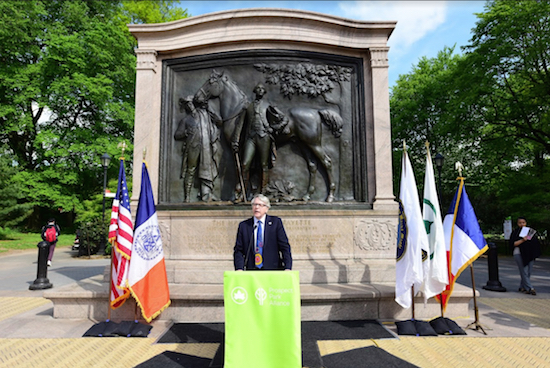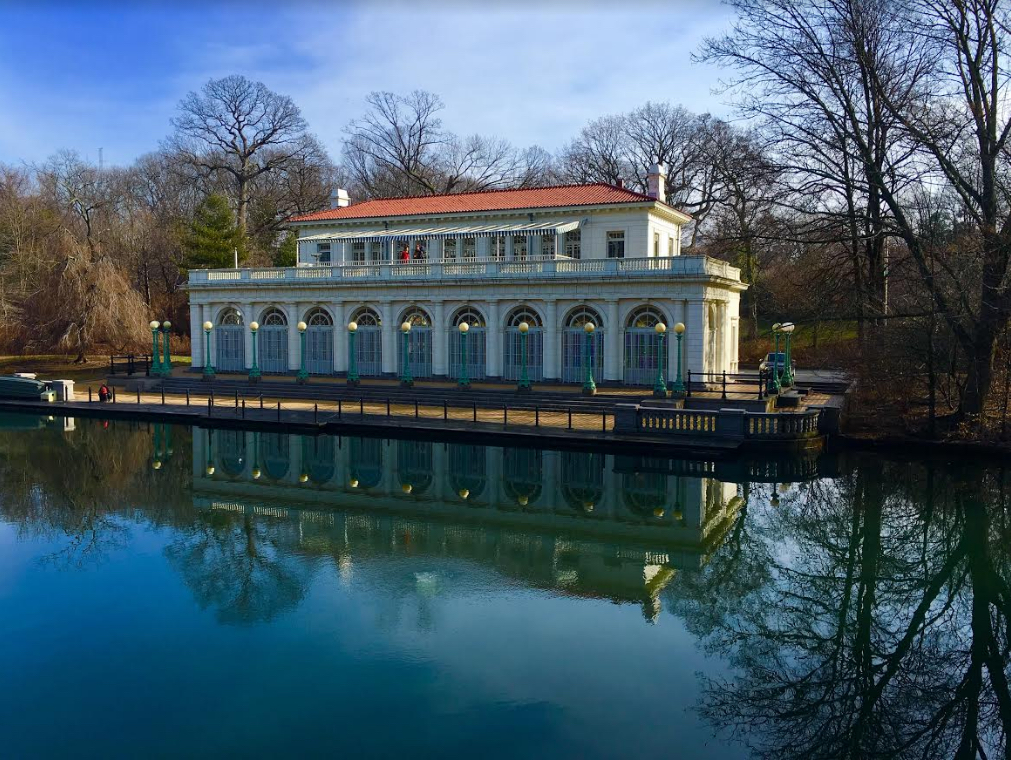Consul-General of France presides over centennial of Prospect Park’s Lafayette Monument
Brooklyn Eagle Returns 100 Years Later to Cover Ceremony

“Lafayette, nous voila!” became the rallying cry of the American Expeditionary Forces as they landed in France a century ago to join the republic in her desperate bid to maintain liberty. “Lafayette, we have returned!” they called out, and in so doing prepared to repay the debt to America’s oldest ally, whose presence in the War of Independence has always been symbolized by the leadership of Marie-Joseph Paul Yves Roch Gilbert du Motier de La Fayette — the Marquis de La Fayette.
On Wednesday, exactly 100 years after it was first unveiled, another group returned to the Lafayette Monument in Brooklyn’s Prospect Park to honor Daniel Chester French’s vision, pay homage to the man who inspired it and celebrate the national friendship it represents.
“This monument was conceived as a gesture of support and friendship between the United States and France,” Prospect Park Alliance President Susan Donaghue explained. “That friendship, that mutual support is so important with what’s happening in the world today.” Donaghue went on to remind attendees that 2017 is also Prospect Park’s sesquicentennial, with many special events planned in commemoration of its 150 years.
